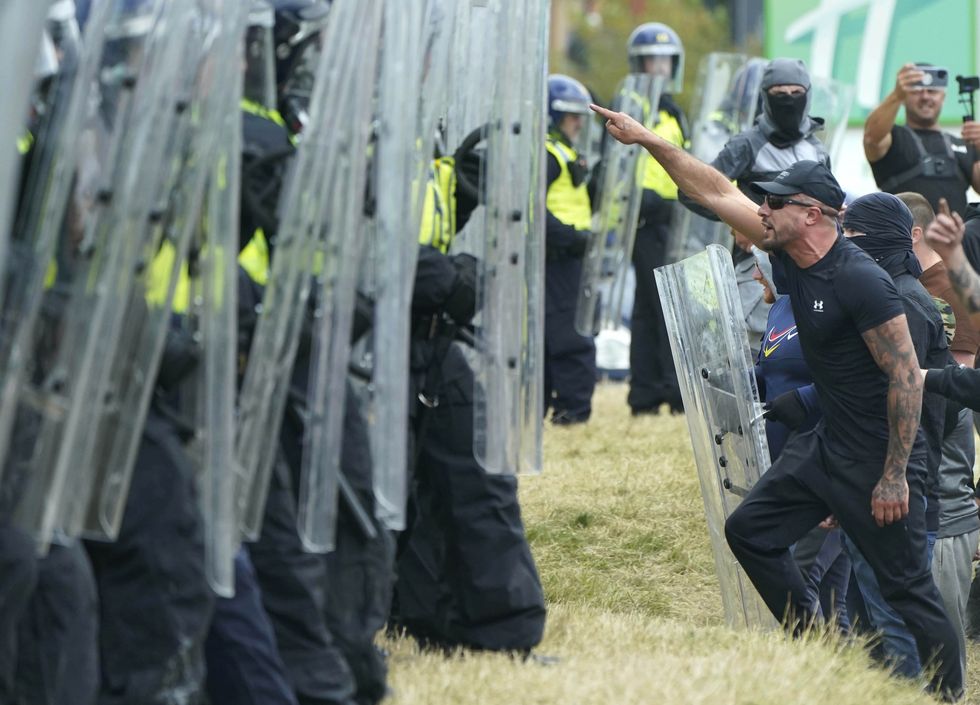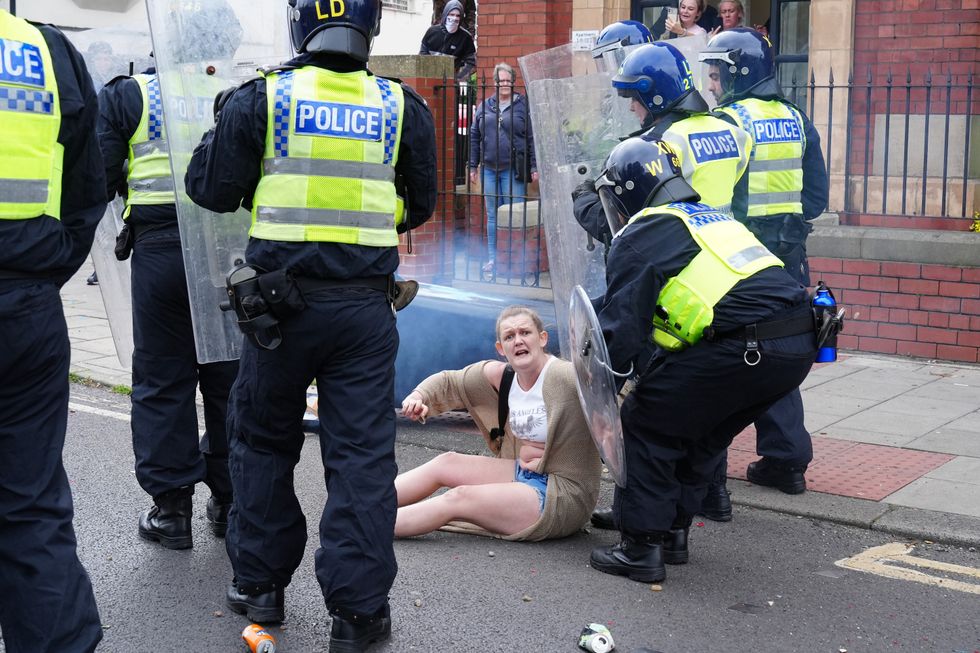Police have underestimated the risk of disorder during the Southport riots which involved an “extreme nationalist sentiment”, a watchdog has said.
There were gaps in intelligence associated with social media and the dark web, according to a report published by His Majesty’s Inspectorate of Constabulary and Fire and Rescue Services (HMICFRS).
The document has detailed that the police forces who handled the summer riots failed to consider earlier indicators in 2023 and 2024, which were not reflected in police intelligence reports.
The report said: “We have found that the series of incidents of violence and disorder across the UK during 2023 and 2024 should have influenced the police service’s assessments of threat and risk.

Nationwide disorder took place in towns across the UK last summer in the aftermath of the horrific stabbing of three girls outside a Taylor Swift dance class in Southport at the end of July
PA
“Our assessment of these incidents suggests that the risks of disorder were greater than the police believed them to be.”
It said that the incidents “involved extreme nationalist sentiment, aggravated activism or serious disorder”, and included disorder in Merseyside and Rotherham in February 2023, as well as in the Welsh town of Llanelli from July until October.
“All of them took place before the Southport killings and subsequent outbreaks of widespread disorder across the UK,” it added.
Chief Inspector of Constabulary Andy Cooke said: “We found the police decisions to co-ordinate and mobilise those public order officers nationally were made too late, and the police didn’t have a proper intelligence picture of the rising tide of violence.
“There were gaps in their intelligence functions, especially around the analysis of social media and other dark web media, and no one understood or could counter the emerging cause and effect of that misinformation and disinformation.
LATEST DEVELOPMENTS:
“So the police failed adequately to denounce it or mitigate against it in real time to deter or curtail the disorder.”
Nationwide disorder took place in towns across the UK last summer in the aftermath of the stabbing of three girls outside a Taylor Swift dance class in Southport at the end of July.
Beforehand, there was also substantial disorder in Harehills, Leeds, a protest in Rotherham in response to the Manchester Airport arrests, and the murder of a soldier in Kent.
Additionally, Tommy Robinson had held a mass rally in London on July 27.
The report showed that police chiefs had implemented a system to increase resources “too late” and had been brought in four days later than initially planned.
Consequently, lines of police officers were bombarded with missiles, and there were not enough of them to make arrests. During the riots, 302 officers were injured.
Cooke added that police systems must change, adding that the police officers which endured the riots ought to be praised.
He said: “Officers displayed immense bravery in the face of extreme violence. It is to their enormous credit that they kept the public safe.

Anti-immigration protests took ahold of the nation in summer 2024
PA
“Many police officers sustained injuries, and some were hospitalised.
“The violence officers suffered is shameful and unacceptable. They deserve the public’s full support.”
The National Police Chiefs’ Council lead for public order, Chief Constable BJ Harrington, said: “The report states that, with hindsight, the national mobilisation plan should have been made earlier, and this is a helpful recommendation.
“Hindsight can be useful, and these learnings are important, but we are pleased that the inspectorate also recognise how complex of a situation this was for policing to respond to, and that on the whole, the service did so well.
“Of particular note, I’m pleased that the report recognises that the mobilisation of resources was instrumental in ending the disorder and restoring peace to our towns and cities.
“This was the largest mobilisation of public order public safety officers since 2011, and it is encouraging to see that the report acknowledges the immense bravery and professionalism shown by our people at this time, often in the face of serious abuse and threats.”
He confirmed that the report’s conclusions will be “considered very carefully”.